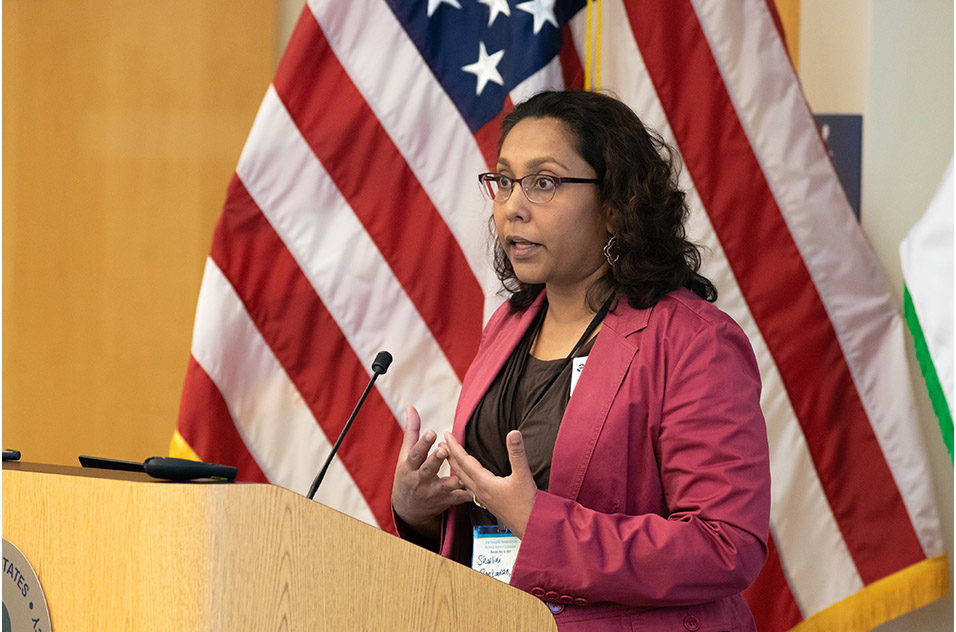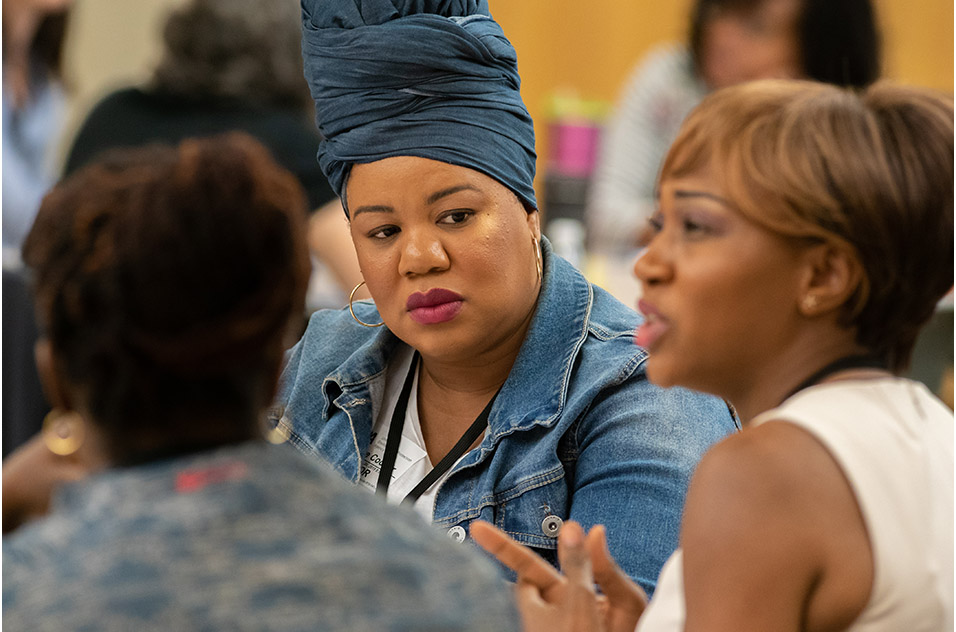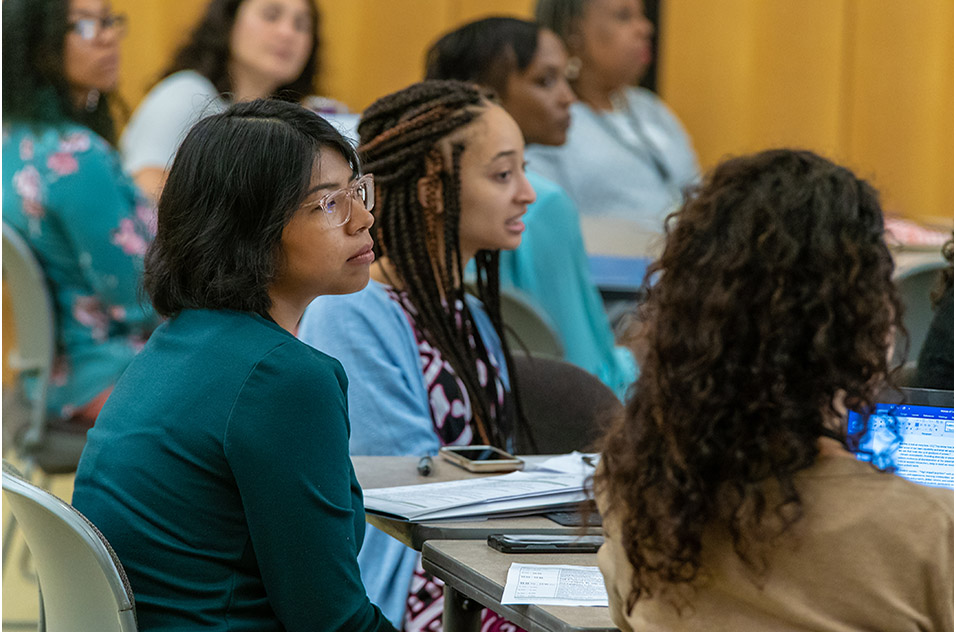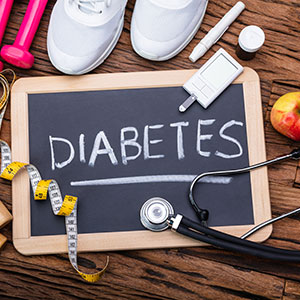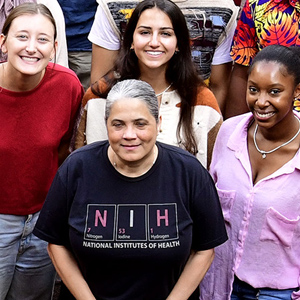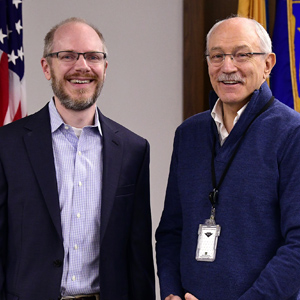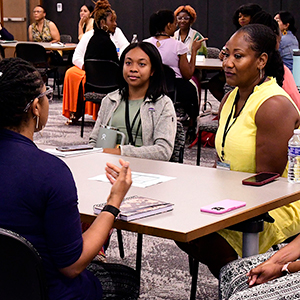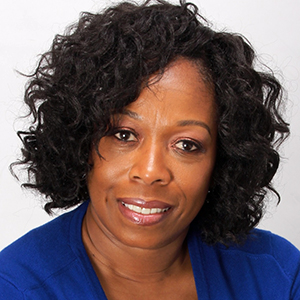Representatives from diverse backgrounds and career levels gathered May 30 at the Environmental Protection Agency in Research Triangle Park, North Carolina for the second annual symposium of the North Carolina Women of Color Research Network (WoCRN). WoCRN is co-chaired by Ericka Reid, Ph.D., director of the NIEHS Office of Science Education and Diversity (OSED).
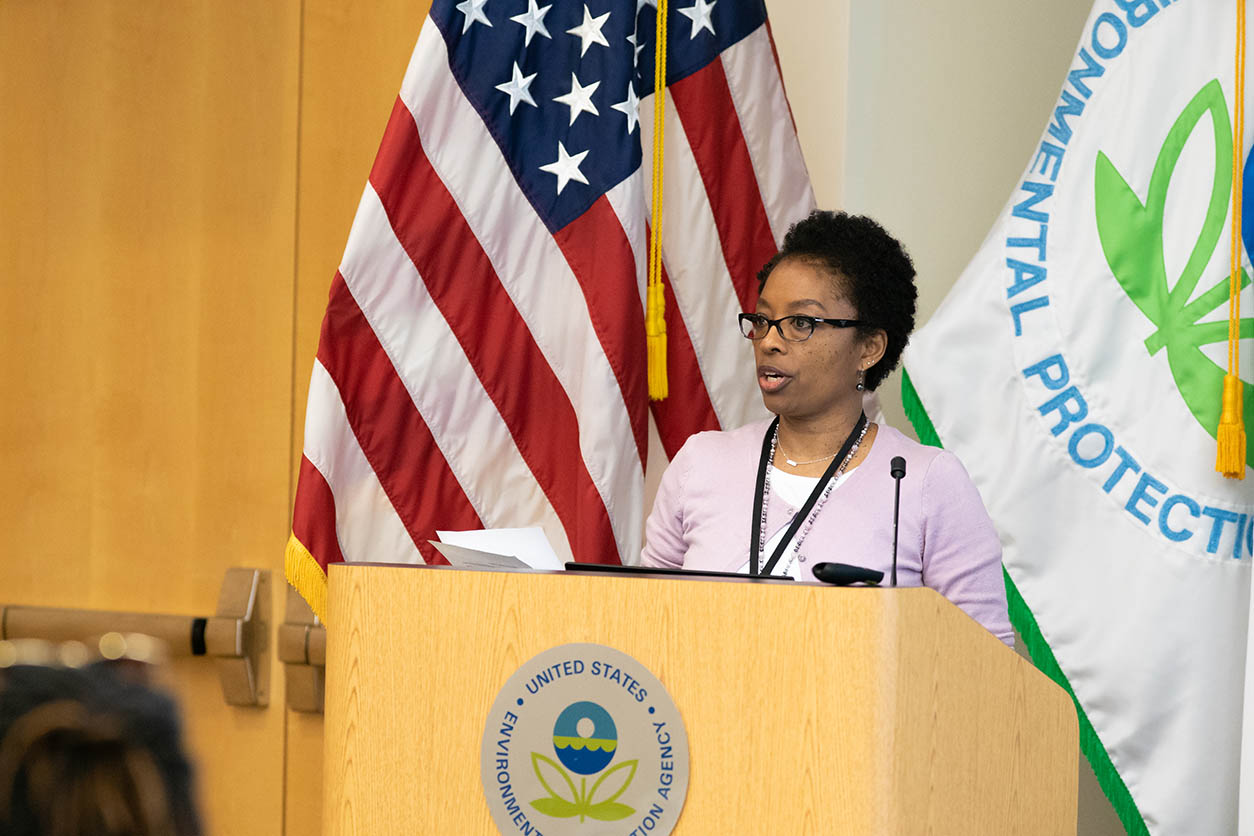 Reid oversees OSED’s varied activities, such as providing assistance to students and health science professionals from underrepresented groups who are interested in environmental health careers. (Photo courtesy of Michael Garske)
Reid oversees OSED’s varied activities, such as providing assistance to students and health science professionals from underrepresented groups who are interested in environmental health careers. (Photo courtesy of Michael Garske)This year’s theme was “Becoming: Women in Science,” inspired by the best-selling memoir “Becoming” by former first lady Michelle Obama, J.D. A discussion of the book capped off a day of talks, speed networking, and poster sessions.
“Becoming a woman in science is a journey,” said network co-chair Sharonda LeBlanc, Ph.D., a postdoctoral researcher at the University of North Carolina at Chapel Hill (UNC). “We hope that the network can facilitate that journey, and that the symposium can provide inspiration for participants, wherever they are on their career path.”
Power of positivity
LeBlanc began the symposium by welcoming the participants and giving a short history and description of the North Carolina chapter of the National Institutes of Health’s WoCRN. She explained that in addition to the symposium in the spring, the chapter organizes a webinar in the fall and a social event in the winter. Reid followed LeBlanc’s comments with a call for volunteers to support the network year-round. “As much as Dr. LeBlanc and I would like to believe that we are rock stars, we still can’t do this alone,” she said. “If you’d like to help, let us know … and/or join the planning committee for 2020.”
In her appeal, Reid exhibited two effective coping strategies for survival in the research workforce: a positive attitude and a strong support network. Sibby Anderson-Thompkins, Ph.D., special assistant to the Vice Chancellor for Research on Diversity & Inclusion at UNC, said these strategies were among the evidence-based approaches for dealing with the specific challenges women of color face.
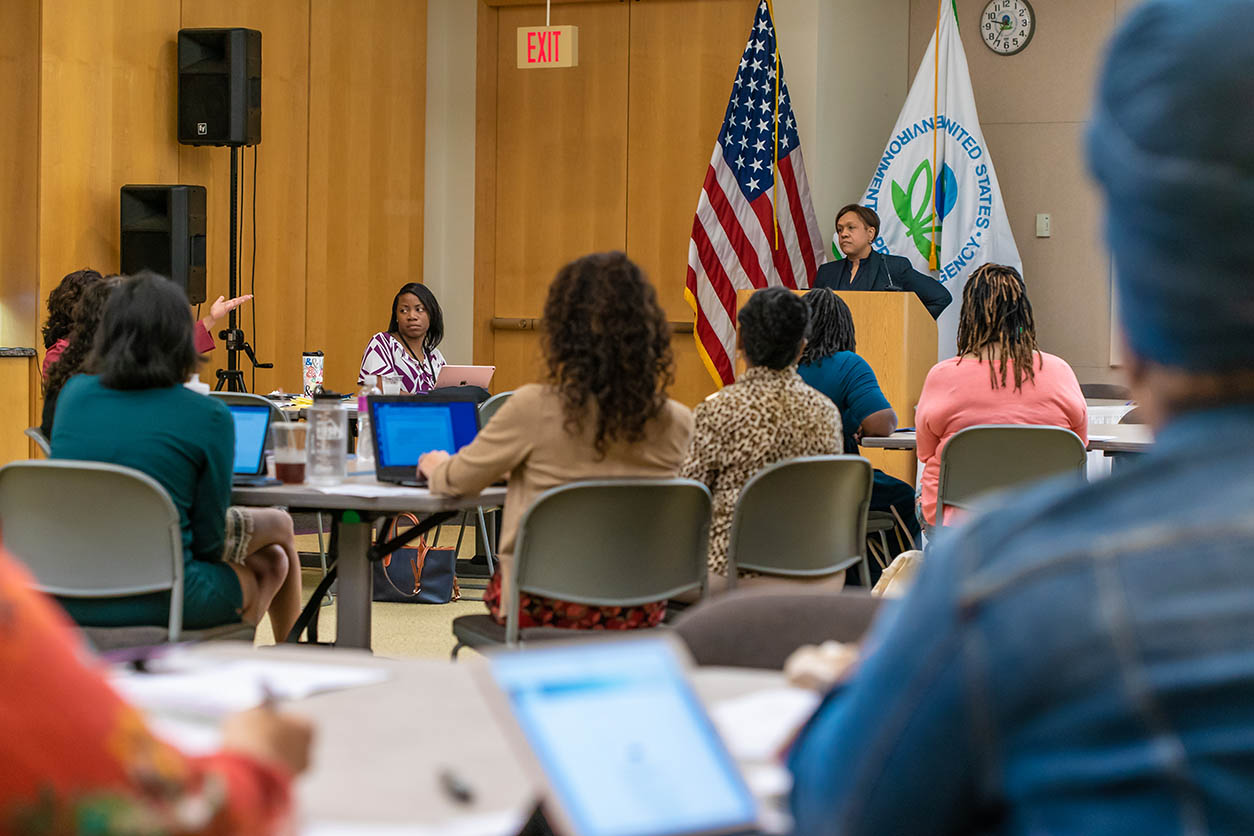 After serving as diversity officer for the National Postdoctoral Association, Anderson-Thompkins, at podium, published books outlining institutional support for women and challenges faced by women of color. (Photo courtesy of Michael Garske)
After serving as diversity officer for the National Postdoctoral Association, Anderson-Thompkins, at podium, published books outlining institutional support for women and challenges faced by women of color. (Photo courtesy of Michael Garske)“Because of the hue of their skin, some women can feel like they are hypervisible and yet not heard. Or if they are heard, they are cast as the angry black woman or emotional Latina,” said Anderson-Thompkins. “It is not just stereotyping, but the way you can get entangled and lost in the way other people see you, and how that can limit you. We found the practice of self-efficacy can mitigate that.”
Anderson-Thompkins said that self-efficacy, often referenced as self-confidence, plays a major role in the ability to endure, manage, and overcome challenges or setbacks. When things don’t go according to plan, she tells her students and friends, “You’ve got this.” According to her research, being able to reframe negative experiences is one of the most effective ways to endure the journey of becoming a researcher.
Finding your voice
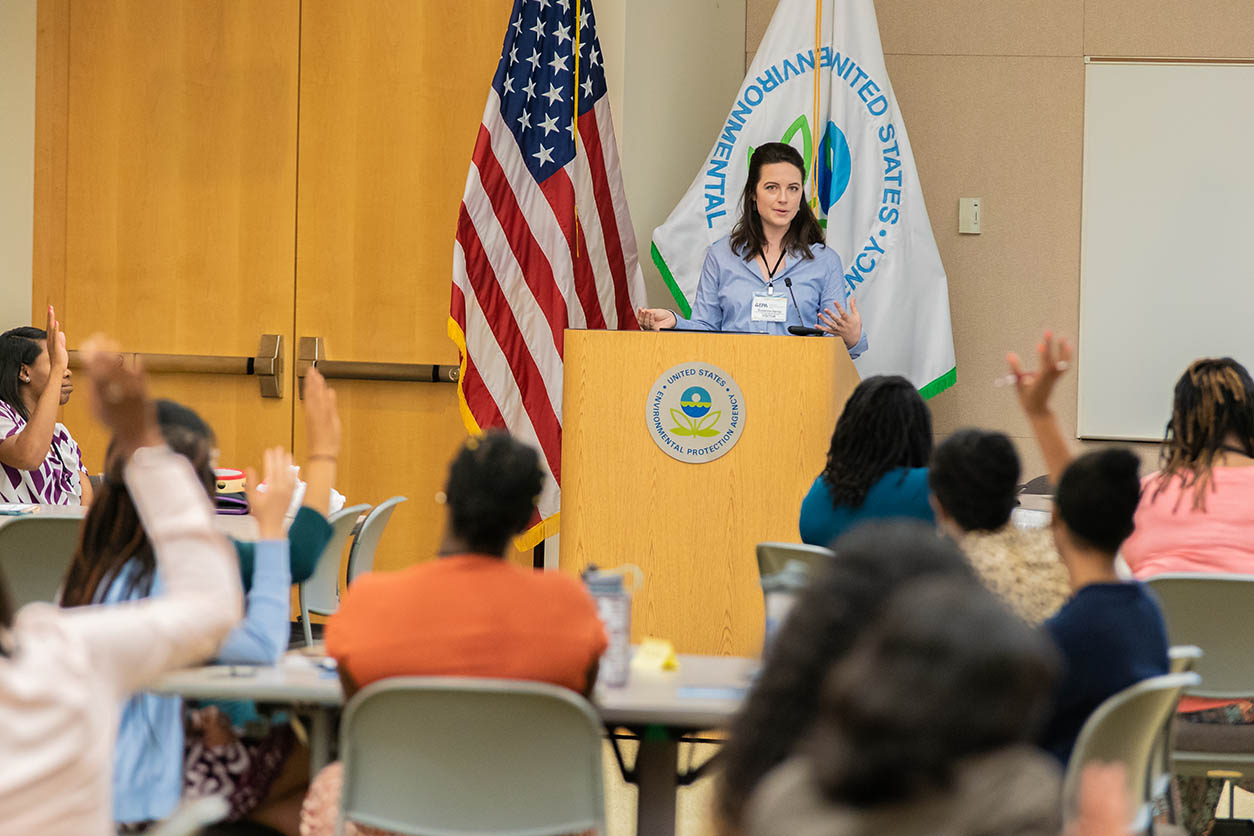 Harris, at podium, whom LeBlanc described as a social media phenom, surveyed the audience on their regular use of various forms of social media. (Photo courtesy of Michael Garske)
Harris, at podium, whom LeBlanc described as a social media phenom, surveyed the audience on their regular use of various forms of social media. (Photo courtesy of Michael Garske)Scientists have a responsibility not only to each other, but also to the general public, said Susanna Harris, a Ph.D. candidate in microbiology at UNC. In her talk on science communication, Harris explained that the public trusts scientists more than the media and more than politicians. That trust presents an opportunity for scientists to help educate the public on how the world works, as well as to combat misinformation.
Harris acknowledged that social media can be daunting. She told the audience to start with what they know, rely on what they are already doing, and consider how their perspective is unique. For example, the fact that the attendees were women of color meant that they could speak from the unique perspective of women of color.
“But you get to choose your own perspective,” Harris said. “Social media is large enough that no matter what direction you are coming from there is going to be an audience. Our institutions tokenize us to the point that everyone in this room could end up with the same label.” Harris told the women they should feel free to decide who they are in a lot of different facets. Their passion might be for issues related to women of color, or it might be related to the science of tidal pools, or it might be a combination of the two.
(Marla Broadfoot, Ph.D., is a contract writer for the NIEHS Office of Communications and Public Liaison.)





